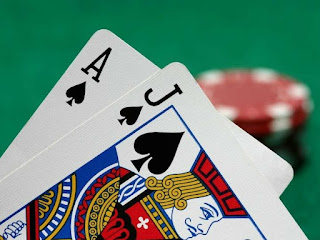Types of Poker
2-7 triple draw: The seller gives every player five cards, facedown, before a wagering round begins. Then, at that point, the first of three draw adjusts starts, empowering every player to trade cards from their current hand with ones from the vendor. There is then a second wagering round and a subsequent drawing round. A third wagering round starts, then, at that point, a last and third drawing round. In a 2-7 lowball game, the most reduced positioning poker hand wins. 홀덤포커
5-card draw: In a five-card draw game, the seller gives every player five cards to start. Each player is given the choice, in the request wherein the seller gave their cards, to exchange up to three of their cards for new ones from the vendor. The player toward the finish of that round with the best five-card hand wins.
7-card stud: A seven-card stud game is like a five-card draw game with the exception of the poker players are totally managed seven cards toward the beginning. Of those seven, three cards are facedown, and the leftover four are faceup cards. Every player in a seven-card stud game needs to make the most noteworthy positioning hand from five of their seven cards. The player with the most noteworthy hand wins.
Badugi: A round of badugi has a similar positioning design as in customary poker besides rather than aces being high-esteem cards, they are currently low. The seller issues players four cards rather than five, and afterward a wagering round starts. Then, at that point, the primary draw round begins, where every player can attract up to four cards all at once. A second wagering round starts, then, at that point, there's one more attract of up to four cards, trailed by a third wagering round. Then, at that point, there's the last draw, a last wagering round, and afterward the standoff. The player with the best poker hand out of their four cards wins.
Chinese poker: This game starts with the seller giving every one of the two to four players 13 cards. Every player divides their cards into two hands with five cards and one hand with three cards. In Chinese poker, every single one of these hands has a name: the three-card hand is known as the front, and the two five-card hands are known as the center and the back. The objective is that the front hand ought to be the most reduced positioning hand, while the back ought to be the most elevated positioning hand. The player puts their cards down on the table as follows: first the front hand, facedown and farthest from the player; second the center hand, facedown and nearer to the player; and third the back hand, facedown and nearest to the player. Every player declares whether they are playing their hands. Provided that this is true, they declare what eminences they will play (the gathering chooses these units before the game). The players procure focuses in light of the hands they uncover, and the champ gathers eminence units. 포커게임
Local area card: These games, for example, Texas hold them, are a minor departure from standard poker and require the vendor to distribute pocket cards to every player. There are likewise local area cards managed faceup on the table. Every player then, at that point, makes a hand utilizing their pocket cards just as the local area cards.
Draw: A minor departure from standard poker, a draw poker game permits the players to trade cards (typically up to three cards) with the vendor in the wake of accepting their first arrangement of cards. The players then, at that point, utilize those cards, just as the first set, to make a hand.
Omaha hold them: Also known as Omaha or Omaha poker, this game is like Texas hold them in that there are four wagering rounds and five local area cards. In any case, the five local area cards start faceup all along, and every player gets four pocket cards rather than two. Every player makes their five-card hand from their four pocket cards and the five local area cards. A minor departure from Omaha hold them is called Omaha hello/lo, with every player making a five-card hand that is high and another five-card hand that is low.
Pineapple poker: Pineapple poker is like Texas hold them with a couple of changes. Every player starts with three pocket cards; they take a gander at their cards and dispose of one of them. Then, at that point, the main wagering round begins. From that point, the principles are equivalent to Texas hold them. An insane pineapple poker rendition plays much the same way, aside from the players clutch every one of the three of their pocket cards until the round before the vendor turns over or bargains the fourth card, otherwise called the turn card. An adaptation called apathetic pineapple poker begins like pineapple poker, yet a player doesn't need to dispose of a card until the vendor turns over or bargains the stream card (the last card of five local area cards).
Razz: A razz poker game is a lowball poker game (a sort of game wherein the most minimal positioning hand wins) in which the conventional rankings of the cards-ace is generally the most noteworthy, two is typically least don't have any significant bearing, with the ace rather being the least card in the deck. The objective of the game is to play a low hand rather than a high hand. Razz follows a stud design, which means the players have no an open door to trade their cards.
Stud: A stud poker game is a minor departure from standard poker. In stud poker, the player should assemble their best hand out of the cards the vendor has given to them. There is no card trading in a stud game, and these games typically comprise of five or seven cards for each hand.
Texas hold them: After paying (meeting the base measure of cash needed to play), every player gets two pocket cards to start, then, at that point, the seller places five local area cards facedown on the table, and a series of wagering starts. Then, the seller turns three of the local area cards, called the failure, faceup on the table. One more round of wagering follows. The seller puts the fourth local area card, known as the turn, faceup on the table, and one more round of wagering happens yet this time the stake is multiplied. At last, the vendor flips over the waterway, which is the last local area card. A last round of wagering happens, and the stake is multiplied once more. Every player then, at that point, overlap or partakes in the standoff, playing their hand utilizing their pocket cards and the local area cards. The champ is the one with the most noteworthy positioned hand. 포커하는방법

.jpg)


Comments
Post a Comment